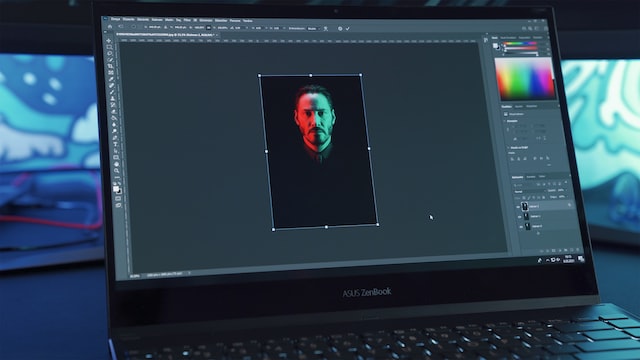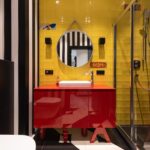If you want to break into the world of professional interior design, look no further. You need to consider many things when starting this career path, and we have put together some essential tips to help you transition to becoming a successful interior designer. From gaining valuable experience, finding inspiration and creating your portfolio, these ten tips will provide invaluable guidance for launching your venture into the exciting and rewarding industry of UK interior design.
1. Start at home
Professional interior design is a varied, ever-evolving field full of potential! If you want to enter as an interior designer in the UK, the right start begins at home. First, familiarise yourself with the accepted regional guidelines and regulations – these can be found on various authoritative websites concerning interior design dealing with construction permits, decorative standards, etc.

Additionally, you’ll need to invest time in attaining knowledge of architectural foundations and techniques for effective drawing. Reading up on colour theory, viewing exhibitions of designers past and present, and taking courses all help build on this preliminary knowledge base.
Finally, start creating your portfolio to highlight your original projects – no matter the scale – and any certificates of completion or internships related to interior design. With the proper preparation, anyone can successfully break into professional interior design at home!
2. Build up a portfolio
Breaking into the professional interior design industry in the UK can be daunting. It’s essential to have a strong portfolio of work to showcase your talents and demonstrate your suitability for interior design roles. This can include images of previous projects or references from past clients. Degrees or other qualifications should also include any work experience or internships.
Keep the portfolio focused on achievements that are related to interior design, such as sketches, colour swatches and photographs from relevant projects. It’s important to present evidence that shows the ability to design comfortable and attractive interiors and demonstrate knowledge of surface finishes, space planning and furniture selection. A well-crafted portfolio can make all the difference in impressing potential employers and gaining an interview opportunity in this competitive field.

3. Seek out free courses
For aspiring interior designers in the UK, there are a variety of free courses available for those looking to break into the professional design industry. From online tutorials and virtual masterclasses to local workshops, the right free course can help you develop your skills, unlock opportunities, and perhaps even set you up with useful contacts in the industry. You may also find that taking part in a free course can be an excellent way of exploring potential areas of specialisation or niche markets to focus on during your career. To get started, search online for relevant free courses in your area and sign up today – gaining knowledge never hurts!
4. Consider an internship
For aspiring interior designers in the UK, an internship is an ideal way to break into the profession. An internship provides valuable hands-on experience and a chance to learn directly from established industry professionals. It also serves as a great networking opportunity, as contacts made during internships can often prove to be invaluable resources when seeking employment opportunities.
Finally, potential employers are likely to view a candidate who has completed an internship more favourably than one without such relevant experience. Therefore, if you want your career in professional interior design to get off on the right foot, approaching local firms and inquiring about internships should be top of the list.
5. Keep on top of industry trends
As a budding professional interior designer in the UK, staying ahead of industry trends is essential to getting a foothold in this competitive field. Knowing what colours, textures, materials, and patterns are popular and best suited for different spaces can give an aspiring interior designer valuable knowledge and insight that can be applied during all phases of design work, from planning to execution.
Additionally, keeping up with buyers’ tastes and habits enables an interior designer to create aesthetically pleasing and practical designs. Finally, staying up-to-date with new industry technology—like 3D architecture software—can help bring greater realism and creativity to design projects. Taking the time to understand the latest trends ensures success as a professional interior Designer.
Popular Interior Design Trends for 2023
1. Natural materials – natural materials, including wood, stone and leather, are becoming increasingly popular for interior design projects due to their durability and timeless appeal.
2. Minimalism – minimalist interior designs focus on functionality and simplicity over aesthetics. These interiors feature clean lines and a reduced colour palette for a modern look that is easy to keep organised and clutter-free.
3. Vintage touches – vintage pieces can add charm, character and a touch of nostalgia to interior designs, making them perfect for residential spaces looking for a unique edge.
4. Multifunctional furniture – multifunctional furniture like sleeper sofas is gaining popularity in interior design projects as they provide two functions in the same piece of furniture.
5. Smart technology – smart technology is becoming increasingly ubiquitous in interior design projects as it adds convenience, energy efficiency and comfort to residential spaces.
Whether it’s something as simple as a black boiling tap, or as complex as a voice-activated interior lighting system, smart technology in interior design will continue to gain traction in the years ahead. Aspiring interior designers who are keen on staying ahead of the curve should ensure they have a good grasp of relevant technologies.
6. Look into university courses
If you’re looking to become a professional interior designer in the UK, then completing a university course is a great way to boost your skill set and break into the industry. There are many universities offering diverse courses across the country; each offers its unique take on how to go about learning the principles of interior design, such as spatial relationships, materials and furnishings, colour theory, communication and planning.

Whichever course you choose will equip you with an outstanding critical eye for detail and a creative approach to problem-solving, which are essential skills required when working with clients. Ultimately, a university qualification will give you an advantage over amateur designers and open up exciting opportunities within the interior design world.
7. Take advantage of industry blogs and resources
Taking advantage of industry blogs and resources can be a great way to gain insight into professional interior design. It is an excellent way to learn about current trends, keep up with the latest news and network within the industry. By regularly reading trade magazines, researching relevant online sources and connecting with experienced professionals via social media, budding interior designers in the UK can build connections and knowledge that will help them find jobs in their chosen fields.
Additionally, attending exhibitions, webinars, and other events associated with interior design is a great way to network face-to-face and increase your chances of breaking into the profession. Popular interior design magazines include World of Interiors, Ideal Home, Elle Decoration and Architectural Digest.
8. Develop a style of your own
Developing a style of your own when breaking into the professional interior design field can be intimidating, especially if you’re in the United Kingdom. That being said, it’s important to remember that there is room for creativity, originality, and even personal flair in professional design work – as long as you stay within broad industry standards for form and function. To develop your unique style, take some time to familiarise yourself with project styles from prominent designers in the UK and tailor them to suit your preferences.
Pay special attention to any trends or formally accepted elements in the area you want to focus on, such as modern industrial kitchen designs or traditional Victorian decor. Above all else, ensure that each of your designs conveys a sense of cohesiveness appropriate for its surroundings while highlighting – or subtly playing off – any distinguishing traits or features you have personally identified as part of your individual style.
9. Become adept at using design tools
Interior designers in the UK have to be quick on their feet when understanding new—and existing—design tools. Photoshop, in particular, is a powerful tool that professionals use to create concept drawings and develop schematics that help showcase and compare different design options. But even if you don’t have any prior Photoshop experience, there are plenty of ways to become adept at using this versatile program.

Free tutorials are easily accessible online, while Photoshop workshops and community-based events offer opportunities to learn firsthand at a low cost. Regardless of how you decide to learn Photoshop, making sure you understand all this software has to offer is paramount if you’re looking to break into professional interior design in the UK.
10. Network!
If you’re looking to break into the field of professional interior design in the UK, networking with experienced professionals is an essential step. Finding people in the industry who can mentor you, share their experiences and introduce you to others can be invaluable. Meetups and conferences dedicated to interior design are an excellent place to start – or online networking events such as webinars and virtual seminars are a great way to make contacts without leaving home!
Remember, never be afraid to spend time building meaningful relationships with those who have what you want – after all, they may be the ones to help you take the next step towards your goals.
FAQs
How much do UK interior designers earn?
Many people are unaware of how much UK interior designers can earn. Depending on the experience level, freelance interior designers can make roughly £24,000 – £42,000 per annum. More experienced and highly sought-after professionals in this area could even make up to a staggering £100,000. It all depends on the complexity, size and duration of each project.
Additionally, established companies often pay qualified and experienced decorators, planners and fitters slightly more than self-employed workers for similar projects. Ultimately, potential earnings for an interior designer in the UK are strong incentives for those considering this career path.
Do you need a degree to get into interior design?
Getting into the interior design field without a degree might seem daunting, but it’s possible to gain the necessary skills with creative thinking and determination. Many interior design companies prioritise experience over education, which gives those without a professional background an opportunity to shine.
To get started in this profession, you must have an aptitude for and knowledge of colours, textures, styles, and materials—develop them by reading up on the latest trends or joining a local design class. With hard work and dedication, you can become a successful designer regardless of obtaining a formal degree. So don’t be discouraged; with some perseverance, it is more than achievable to break into this rewarding career path!
Conclusion
If you’re considering a career in professional interior design, we hope these tips have given you a better understanding of what to expect and how to go about breaking into the industry. Although it may seem daunting, remember that thousands of people do it successfully every year – so if they can do it, so can you! Stay focused on your goals, don’t be afraid to ask for help when needed, and always continue learning and developing your skills. Good luck!






